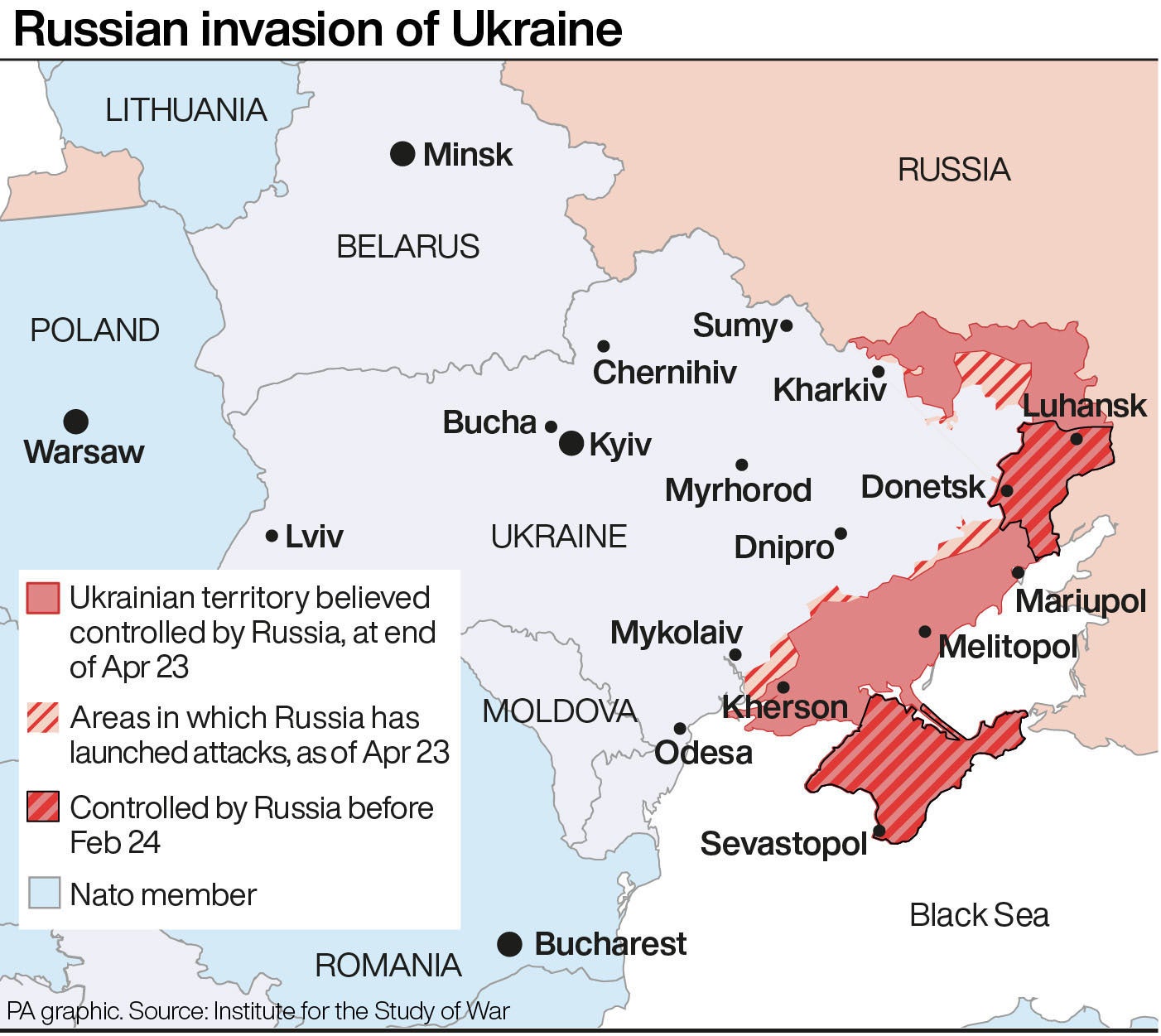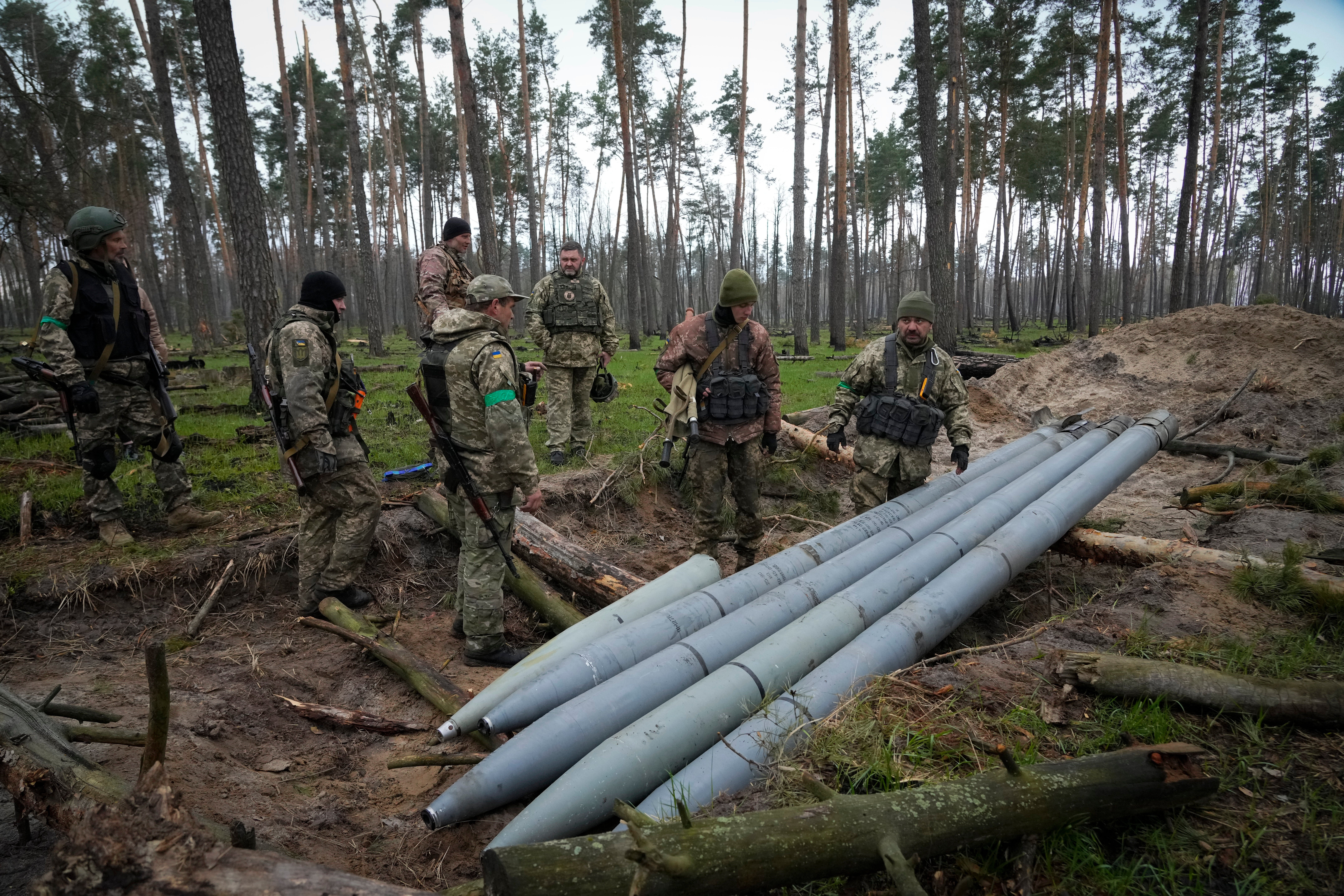
Around 15,000 Russian troops have been killed in the 61 days since they launched a full-scale invasion of Ukraine, according to the UK.
Defence Secretary Ben Wallace also told MPs more than 2,000 of Russia’s armoured vehicles have either been destroyed or captured as he outlined further UK support to Ukraine to help defend its territory.
With Russia switching its attention to further occupying the Donbas region in the south east, Mr Wallace confirmed a “small number” of Stormer armoured vehicles fitted with anti-air missile launchers will be gifted to Ukraine.
Russian President Vladimir Putin “must not be allowed to prevail”, the Cabinet minister added.

Making a statement to the House of Commons, Mr Wallace said: “It is our assessment that approximately 15,000 Russian personnel have been killed during their offensive.
“Alongside the death toll are the equipment losses and in total a number of sources suggest that to date over 2,000 armoured vehicles have been destroyed or captured.
“This includes at least 530 tanks, 530 armoured personnel carriers and 560 infantry fighting vehicles.
“Russia has also lost over 60 helicopters and fighter jets.”
Mr Wallace added: “At the start of this conflict Russia had committed over 120 battalion tactical groups, approximately 65% of its entire ground combat strength.
“As of now we assess around over 25% of these have been rendered not combat effective.”

Mr Wallace said Ukrainian forces have been using Starstreak high-velocity and low-velocity anti-air missiles for more than three weeks.
He also said more still needs to be done to assist Ukraine, noting: “For that reason I can now announce to the House that we shall be gifting a small number of armoured vehicles fitted with launchers for those anti-air missiles.
“The Stormer vehicles will give Ukrainian forces enhanced, short-range anti-air capabilities both day and night.”
In response to questions from SNP MP Dave Doogan (Angus), Mr Wallace said he does not “close off as an opportunity” providing Brimstone missiles to Ukraine.
Conservative Tobias Ellwood, chairman of the Defence Committee, asked: “What does success in Ukraine look like?”
Mr Wallace replied: “Our strategic aim is twofold. One is that Putin must fail in Ukraine, he must fail in his invasion and I think he is on course to do that actually. He must fail in his occupation of Ukraine and I think he has definitely failed in achieving that.
“To the fine tuning of that, that is as much a matter of Ukraine’s choice as it is of anybody else – that Ukraine gets to choose where it wishes to settle for peace. We will do everything we can to support them.
“For my part, I want Putin not only beyond the pre-February boundaries. He invaded Crimea illegally, he invaded Donetsk illegally and he should comply with international law and in the long run leave Ukraine.”

For Labour, shadow defence secretary John Healey warned the UK risks falling behind its military allies’ commitments to Nato if it does not “reboot” defence spending.
Labour former minister Ben Bradshaw asked Mr Wallace for his view on comments made by General Philip Breedlove, a former Nato Supreme Allied Commander Europe, about considering putting Nato troops into western Ukraine to carry out humanitarian missions and to set up a forward arms supply base.
Mr Bradshaw added this could see Ukrainian forces freed up to fight Russia in the south and east.
Mr Wallace replied: “It’s definitely a valid suggestion so far as if we were to fast-forward to a frozen conflict where 80% of Ukraine is still sovereign Ukraine then it is entirely up to Ukraine to decide who it wants to invite onto its territory and for what purposes – just like us being there, as we were, under (Operation) Orbital.
“People seem to forget that until this invasion Ukraine was this sovereign country, yes there was two occupied parts, but if Ukraine wanted British soldiers as it did, it had Swedish soldiers, it had Canadian on its territory, we went exercising with 5 Airborne Brigade last year etc. it’s all possible to do.
“And I think if Putin decides to hunker down into some form of further frozen conflict, we should remember two things: one is he’ll be back for more, because that’s what he did in 2014; and the second thing is he still doesn’t control Ukraine.”







